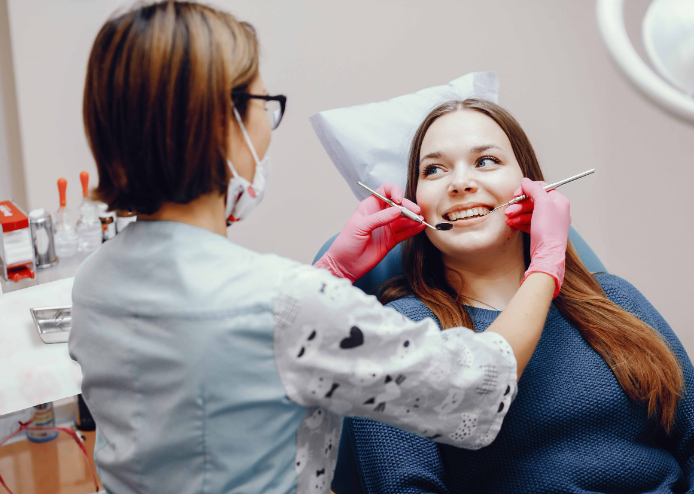Welcome to the ultimate guide to oral care, your go-to resource for achieving and maintaining a radiant, healthy smile. From the basics of brushing to advanced dental tips, we’ve got you covered. Let’s dive in and explore the key elements of a comprehensive oral care routine.

1. Understand the Basics
To build a strong foundation for oral health, it is essential to embrace the fundamentals of a robust oral care routine. The cornerstone of this routine lies in the basics: brushing your teeth twice a day with fluoride toothpaste. This simple yet crucial habit serves as the frontline defence against plaque buildup and cavities. Fluoride, a mineral found in toothpaste, strengthens tooth enamel, providing an added layer of protection.
Equally important to maintaining oral hygiene is regular flossing. Despite the effectiveness of brushing, there are areas between teeth that toothbrushes may not reach. This is where flossing plays a vital role. By threading dental floss between your teeth, you remove plaque and food particles that might be lodged in these tight spaces. This proactive approach not only prevents cavities but also helps thwart the development of gum disease.
2. Choose the Right Toothbrush
When it comes to selecting a toothbrush, the importance of this decision cannot be overstated. Opting for the right toothbrush is a crucial step in maintaining optimal oral health. A soft-bristled brush is highly recommended to prevent potential enamel damage and gum irritation. The gentle yet effective nature of soft bristles ensures thorough cleaning without causing harm to the tooth surfaces or the delicate gum tissue.
Consideration of factors such as head size and grip comfort is equally vital. The size of the brush head should allow for easy manoeuvrability and access to all areas of your mouth, including hard-to-reach places. Additionally, a comfortable grip ensures that you can maintain proper control and dexterity during your brushing routine.
3. Demystifying Dental Floss
Flossing stands as a pivotal game-changer in the quest to prevent gum disease and uphold optimal oral hygiene. Beyond the reach of a toothbrush, flossing becomes the unsung hero, tackling the areas between teeth where plaque and debris tend to accumulate. By incorporating a regular flossing routine, individuals can significantly reduce the risk of gum disease, cavities, and other oral health issues.
Understanding the proper technique for effective flossing is paramount. Begin by taking a generous but manageable length of dental floss, winding it around your fingers, and gently guiding it between each tooth. Move the floss in a gentle back-and-forth and up-and-down motion, ensuring you reach below the gumline. This technique helps dislodge trapped particles and plaque, promoting a thorough cleaning that brushing alone cannot achieve.
4. The Role of Mouthwash
While not a substitute for brushing and flossing, mouthwash can complement your oral care routine. From reducing plaque to freshening breath, discover how different types of mouthwash can cater to your specific needs.
5. The Impact of Diet on Your Smile
What you eat significantly influences your oral health. Explore foods that promote strong teeth and gums, such as dairy products, fruits, and vegetables. Learn to strike a balance, avoiding excessive sugar and acidic foods that can contribute to tooth decay.
6. Tongue Cleaning and Additional Habits
Extend your oral care routine beyond teeth and gums. Tongue cleaning helps eliminate bacteria that can cause bad breath. Additionally, consider habits like staying hydrated, avoiding tobacco, and limiting alcohol intake for overall oral well-being.
7. Regular Dental Check-ups
Don’t overlook the importance of regular dental check-ups. Professional cleanings and examinations are essential for catching potential issues early and maintaining a healthy smile. Schedule appointments with your dentist at least twice a year.
8. Dealing with Dental Emergencies
Know how to handle common dental emergencies, from a knocked-out tooth to sudden toothaches. Immediate action can make a significant difference in preserving dental health.
Conclusion
Achieving a healthy smile is not a one-size-fits-all endeavour. It’s a combination of consistent oral care habits, smart product choices, and regular professional attention. By understanding the basics, personalizing your approach, embracing additional habits, and prioritizing regular check-ups, you’re on the path to building and maintaining a vibrant, healthy smile that lasts a lifetime. Here’s to your dental well-being!
